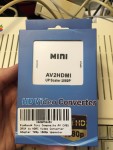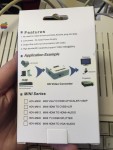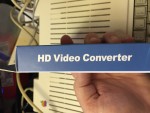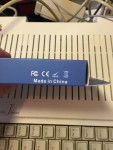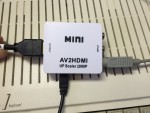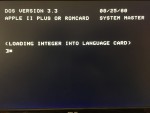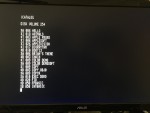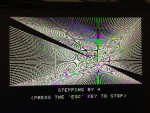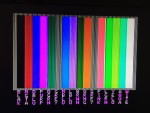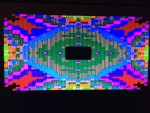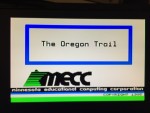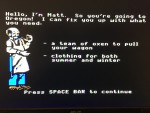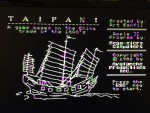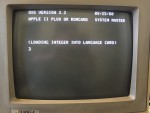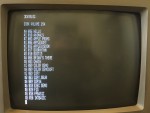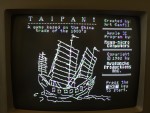Retro Computing Roundtable episode 100 began with a discussion of the problems often encountered when trying to connect an 8-bit computer from the 1980s to a modern display such as a typical 16:9 1080p TV or monitor with HDMI input. Open Apple #43 also included some discussion of the out-of-spec video output from the Apple II series, and the resulting problems that can cause with many digital displays.
With that in mind, I decided to try buying an inexpensive composite video to HDMI converter to experiment with. I got it for $19 from Amazon. I’ve heard reports that results vary a lot depending on the particular converter used, the particular version of that converter (i.e., its innards might get a complete re-design without any outward indication… part of the game one plays when buying these super-cheap imported devices), and the particular video source. Thus, my results here may or may not reflect the results you would get.
I first tried it out with my Apple //c, and the results are pictured below. Those are just iPhone pictures of my monitor screen, but they illustrate some of the less than optimal behavior that I saw.
Plain text looked quite usable, in both 40 and 80 column modes. There is a little bit of variation in the brightness of white pixels, but it’s not too objectionable.
Graphic modes didn’t work as well. In particular, any text had colored ghosting, misplaced and off-color pixels, etc. I’ve only used Apple II series machines with monochrome monitors back in the day, so I’m not sure how this behavior compares to the accepted norm for these machines with contemporary analog CRT monitors. Maybe some of the Apple nerds out there can offer some opinions?
- Amazon Page
- Front of Box
- Rear of Box
- Left Side of Box
- Never would have guessed!
- Plugged In
- 40 Column Text
- 80 Column Text
- Brian’s Theme from DOS 3.3 Disk
- Color Demo from DOS 3.3 Disk: Color Bars
- Color Demo from DOS 3.3 Disk: Kaleidoscope
- Little Brick Out from DOS 3.3 Disk
- Oregon Trail Title Screen
- Oregon Trail Color Adjustment
- Oregon Trail General Store
- Taipan! Title Screen
For comparison, here are a few pictures of the screen of a very dirty Commodore 1080 monitor. Hmm, the HDMI screen does seem to look better than an original CRT display, despite taking a bit more time to resynchronize when graphic modes change. I also experimented with another small color composite monitor, but I didn’t bother with pictures because that monitor clearly needed convergence adjustment.
- 40 Column Text on the Commodore 1080
- 80 Column Text on the Commodore 1080
- Taipan! Title Screen on the Commodore 1080
